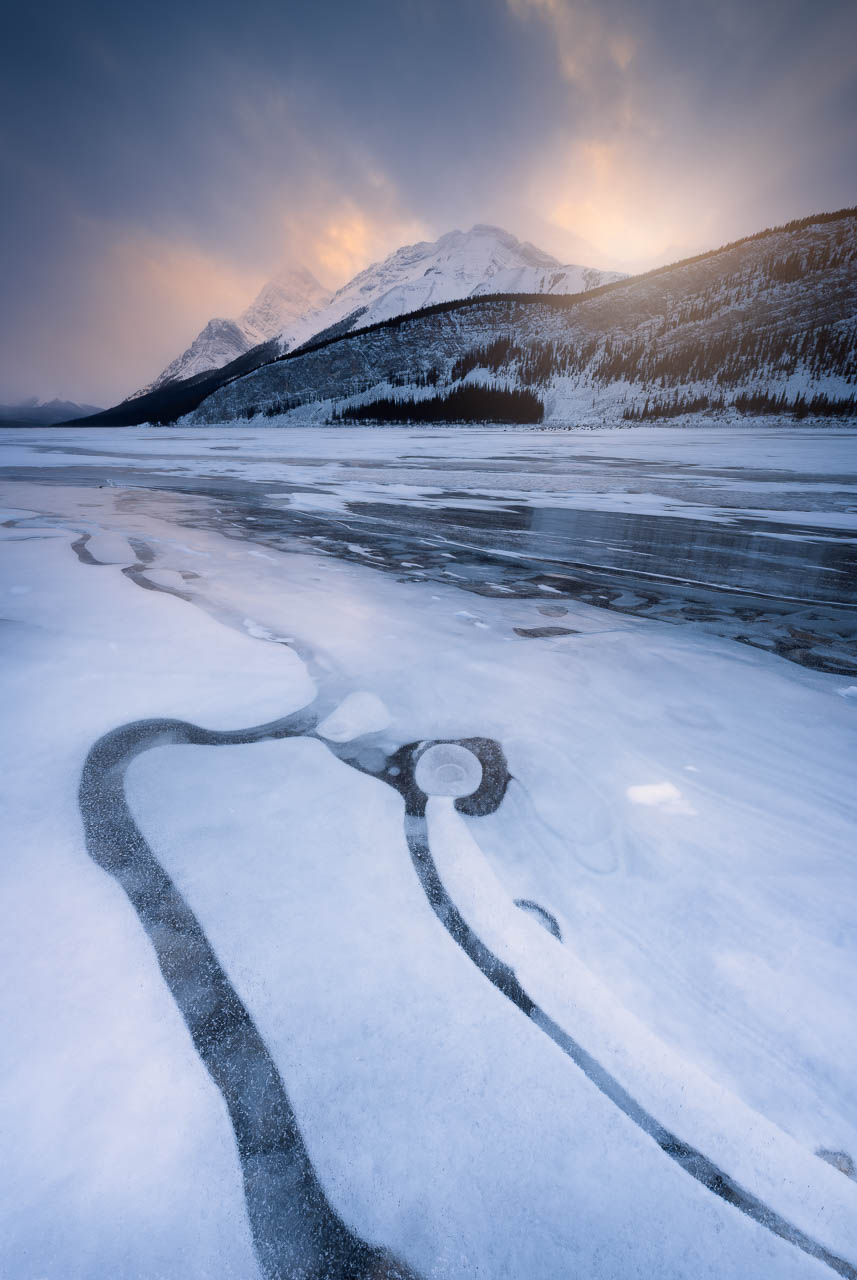
Powerful Landscape Photography Includes These Elements
Feb 28, 2023Landscape photography is not for the faint of heart. Landscape photographers rise before the earliest birds begin to sing their morning songs. We skip meals ignoring hunger, fatigue, cold and heat. We hike through forests and fields, hoping that the animal tracks in the snow are not all that fresh or that the howling wolf pack is farther away than they sound or that the bear frequenting the area signs are old news and he's actually up over the other side of the mountain. We haul heavy gear and wear layers of clothing through weather elements most would remain inside for. We wade through streams and hop into rivers to achieve the perfect composition for sunset. We stay up way past reasonable hours to witness night skies and drive home in dense fog and the enveloping darkness. But we love every single moment of this passion.
With all the efforts we put into getting to a location and all of the other unknown elements at play, like weather and light, we landscape photographers never really know what we'll come away with. However, despite the unknown, we can do a few things as we aim to capture strong images.
1. Simplify
There's incredible beauty in simplicity. Learning what to exclude from your frame is as important as knowing what to include. More does not always equal better. Before capturing your image, look around your frame. Ask yourself if the elements present are detracting or adding to the frame. Be sure only to include essential features. A simple frame can be compelling and create a stronger image.

ISO 100, 86mm, f4, 1/1000 sec
2. Vary perspective
There's power in perspective. Showcasing your subject front and centre is very important in landscape photography. Think about how you can vary your perspective to strengthen a scene. Try moving your tripod lower to the foreground or higher and see how that impacts your photo. Think about your choice of focal length and how that affects the strength of your image. Consider including foreground elements to layer your vision, creating depth and potentially adding visual interest. Look for ways in which you can frame your subject through foreground trees. Move your position right or left, varying your viewpoint a touch. The possibilities here are many. Don't be afraid to consider an alternate perspective, as this will result in you creating stronger landscape images.

ISO 40, 14mm, f10, 1/5 sec
3. Watch for unsightly crops and chops
Cropping is an important discussion in photography. As a mom photographer, I learned early on about preferred cropping regarding my children as the subjects in my photographs. As a landscape photographer, cropping matters too. Watch for unsightly crops like the tops of trees or reflections chopped awkwardly. Think twice about chopping shrubs in half or including only half of a mountain. Take the time to look through your scene so that you are not cropping elements awkwardly.
ISO 64, 14mm, f10, 1/100
4. Think about the story you are trying to tell
A pretty landscape image is nice to look at, but a landscape image that tells a story is captivating. It's not easy to tell a story without words. When capturing a landscape image, consider what you are trying to say. How can you best photograph the scene to enhance the story unfolding? Perhaps you are photographing a thunderstorm rolling through a farmer's field. Compose your image in a way that showcases that storm. Maybe you want to showcase beautiful calm tranquillity. In this situation, a centre composition enhancing feelings of balance and harmony will help strengthen your story. Be purposeful in your design by considering what you will include and exclude in your frame. Think about how you can compose to enhance the story unfolding before you as you stand in awe of how beautiful nature is. Strong composition within a landscape image results in more powerful photos. 
ISO 64, 17.5mm, f11, 1/13 sec
5. Infuse your vision into an image
There will always be a debate between landscape purists and landscape artists. It's my opinion that neither is right nor wrong. Ultimately you are the creator of your image. No two people can photograph a landscape and then identically process that image. We all infuse bits and pieces of ourselves into the art of our pictures. Don't be afraid to infuse your vision into your photographs, as this will result in you creating stronger landscape images.

ISO 200, 170mm, f6.3, 1/100ss
There are many different ways a photographer can create stronger landscape images. These tips will help you build more powerful photos, but remember that practicing correct techniques and applying those approaches in the right order is probably the most important thing you can do to improve your landscape photography photos.



